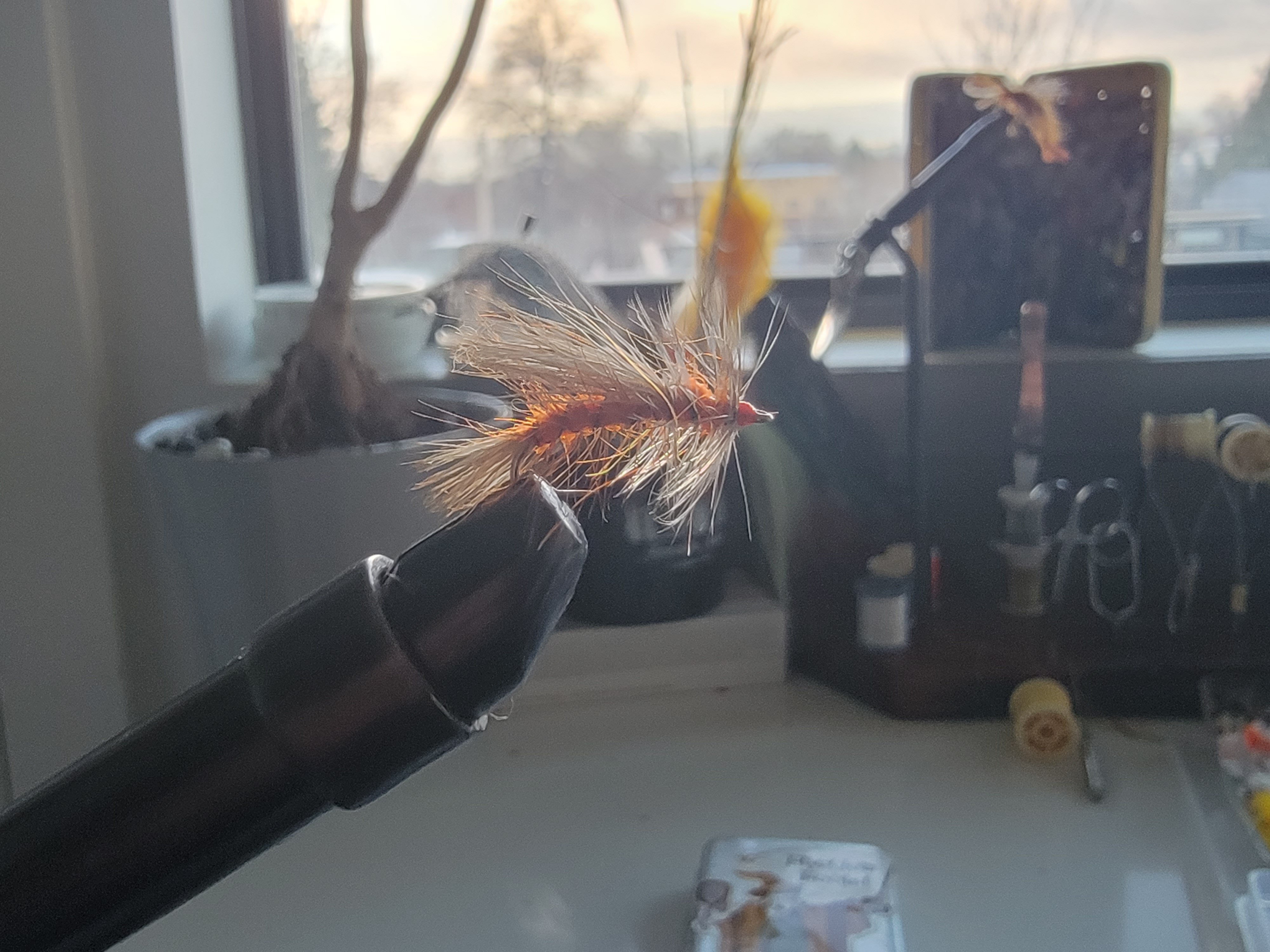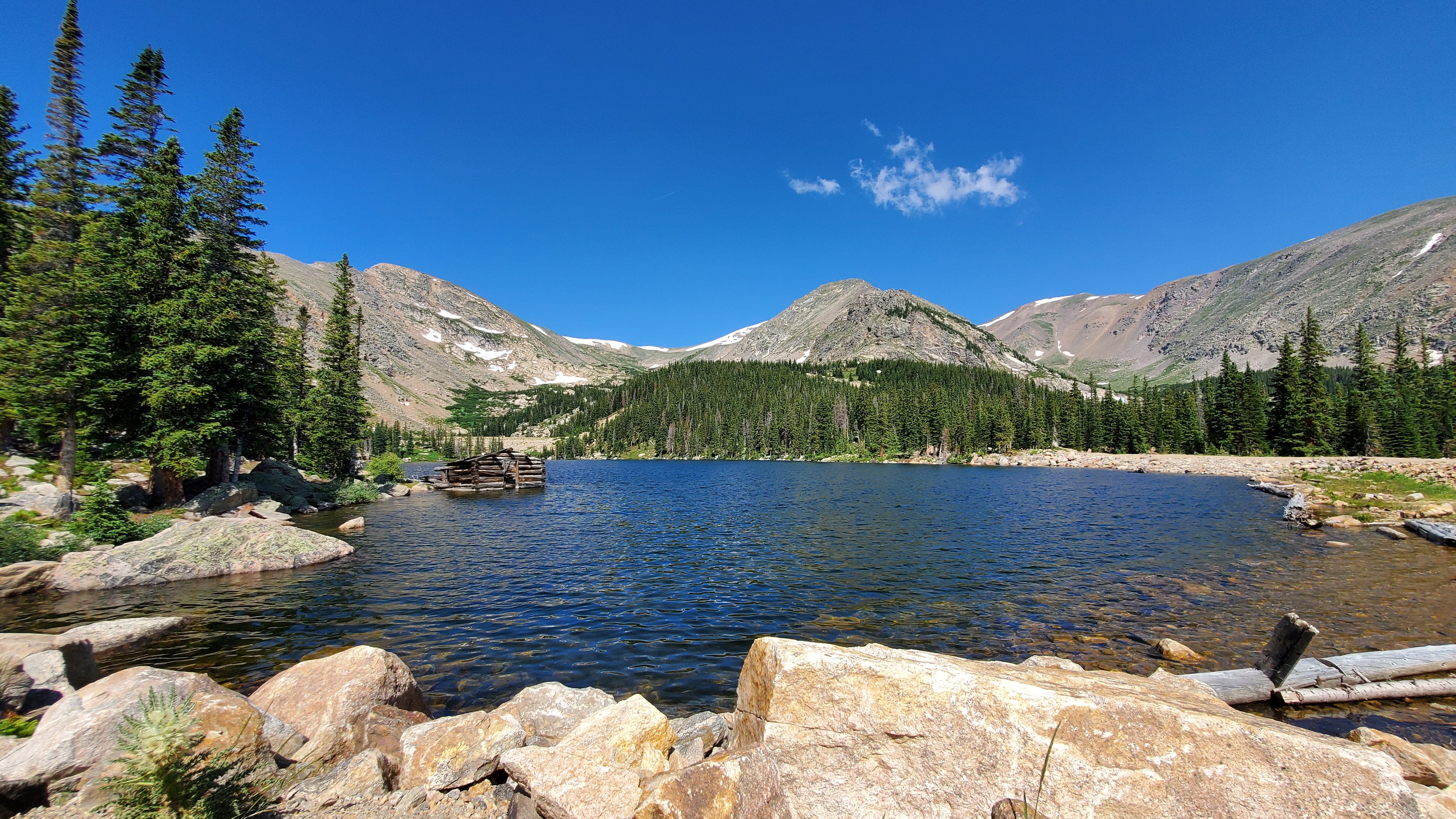High-stick nymphing is a specialized technique that allows anglers to effectively target fish feeding close to the riverbed, particularly trout. This method involves keeping the fly line short and tight, giving the angler increased control, sensitivity, and the ability to detect strikes more effectively.
Popular Locations in Colorado

Rigging Your Fly Rod

High-stick nymphing is a popular fly fishing technique that allows anglers to catch trout in fast-moving waters. This method requires a specialized nymphing setup that comprises a long leader and tippet, which can be around 9 to 12 feet long. The long leader and tippet provide the angler with better control over the fly, allowing them to maintain contact with the nymph and detect subtle strikes.
Attach a weighted nymph fly to the end of your tippet to rig your fly rod for high-stick nymphing. The weighted nymph fly is designed to imitate aquatic insects such as mayflies or caddisflies, the primary food sources for trout. The weight of the fly helps it to sink to the bottom of the river or stream, where the trout are likely to be feeding.
When you're high-stick nymphing, you'll need to keep your rod tip high and your line tight. This will allow you to detect any strikes and set the hook quickly. As you move downstream, you'll need to adjust the length of your tippet to ensure that your fly is drifting at the right depth. With practice, you'll be able to master this technique and catch more trout in fast-moving waters.
Strategic Positioning
It's important to position yourself strategically in the river to increase your chances of catching trout. Look for areas where trout are most likely to feed—such as riffles, runs, and pocket water—as these are the areas where the current is faster, and food sources tend to concentrate.
Riffles are shallow areas where the water tumbles over rocks, creating a bubbly surface. These areas can be great spots to fish because they often have ample insects and other food sources for trout.
Runs are deeper sections of the river with a smooth surface and a moderate current. Trout like to hang out in runs because they provide a steady supply of food and a comfortable place to rest.
Pocket water refers to small, isolated areas of the river where the water is fast-moving and turbulent. This type of water is often found near rocks or boulders and can be an excellent spot to catch trout, as they are known to hide behind rocks to avoid being carried away by the current.
Drift Control

When starting your drift, extend your arm and hold the fly rod at a high angle, almost vertical, in front of you. This technique keeps the fly line short and tight, allowing for a direct connection to the flies and improving your ability to detect subtle strikes.
To maintain control over the drift, use subtle rod movements to manipulate the fly's path. Gently manipulate the line tension and control the speed of the drift to keep the flies at the desired depth. Maintaining the flies close to the riverbed increases your chances of enticing a strike from a trout.
Strike Detection and Hook Set
Being attuned to the subtle movements of the line and leader while high-stick nymphing is crucial for detecting strikes from fish. Even the slightest twitch or pause in the line's movement could signal that a trout has taken the fly, prompting you to act swiftly and set the hook without delay.
Once you sense a strike, it's essential to respond promptly by lifting the rod to set the hook firmly and bring the fish to the surface. The precise control and direct connection to the flies that high-stick nymphing provides greatly increase your chances of effectively hooking and landing the fish, turning a subtle indication into a successful catch. This heightened sensitivity and immediate response are key elements of mastering this specialized fly-fishing technique, ensuring a rewarding and exhilarating fishing experience.
Adjustments and Tips
High-stick nymphing requires adjustments based on the specific river conditions you encounter. Water depth, current speed, and trout behavior can influence your approach. Experiment with different nymph patterns, adjust the weight of your flies and vary the speed of your drift to find what works best in each situation.
Consider taking a beginner nymph fishing class or seeking advice from experienced local anglers or guides when practicing high-stick nymphing. They can provide insights specific to the rivers and conditions you will encounter in Colorado, ensuring a more successful and enjoyable fishing experience.
Fishing Regulations
Before you head out to fish, always familiarize yourself with the specific regulations and guidelines for the area you plan to fish in, as fishing regulations may vary between locations within Colorado. It's important to follow all regulations and practice ethical fishing to protect fish populations and the environment.
Remember, high-stick nymphing is a specialized technique that requires practice and adjustment. With time and experience, you can become proficient and enjoy the thrill of targeting trout near the riverbed using this effective method.
.png?width=300&height=100&name=Copy%20of%20Rise%20Beyond%20Logo%2012.31.24%20(300%20x%20100%20px).png)
.png)

.png)
